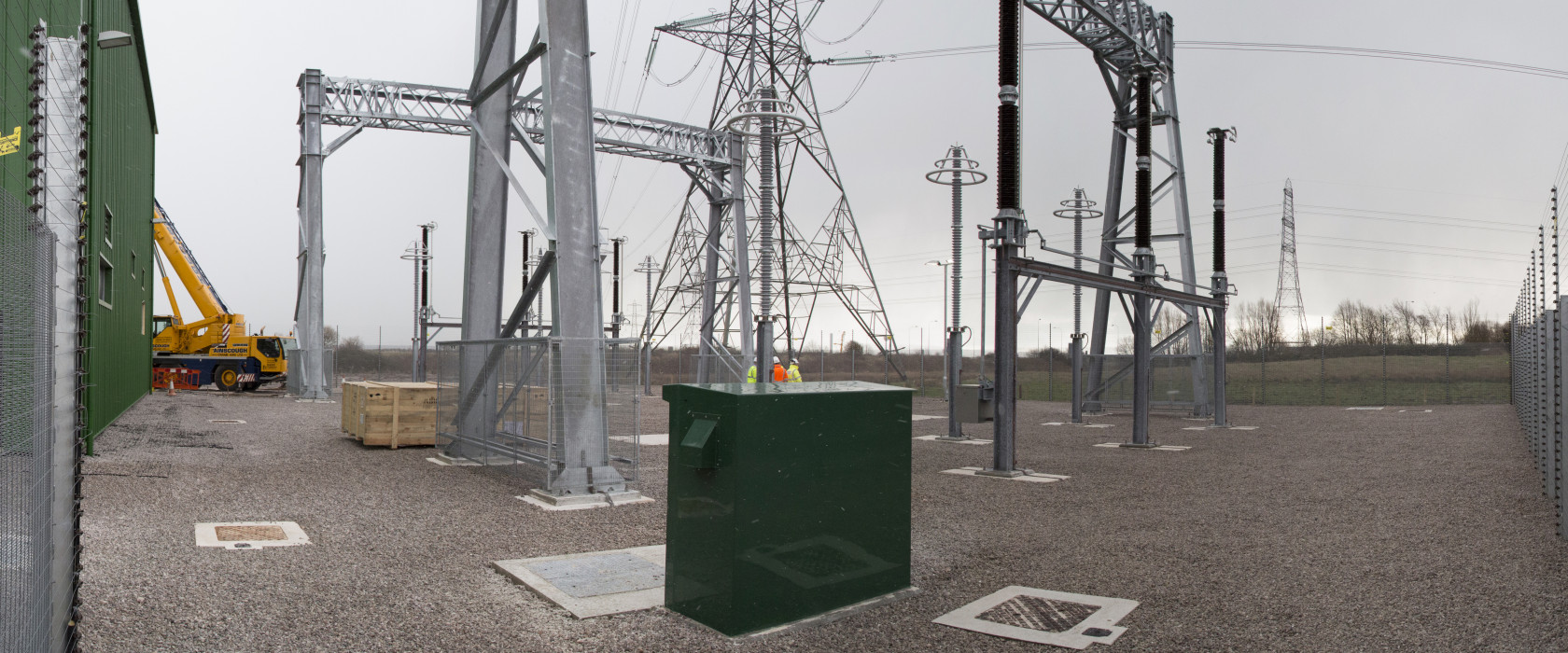- Sector
- Client Morgan Sindall | National Grid | International OEM
- Value £12M
The compact substation paved the way in the use of a mini-GIS kit, introducing a smaller building footprint and cost savings, and it pioneered the support and installation requirements that have since been used on other compact GIS projects.

Pioneering compact layout GIS substation
Highly sustainable project, cutting CO2 emissions by over 30%
Project cost and time savings
The 400kV compact Gas Insulated Switchgear (GIS) substation at Middleton was one of the first of its kind in the UK. It paved the way in the use of a mini-GIS kit, introducing a smaller building footprint and cost savings, and it pioneered the support and installation requirements that have since been used on other compact GIS projects.
BakerHicks provided comprehensive civil and structural consultancy service for the project.
In-depth geotechnical and structural analysis
Enabling works to raise the site level
Architectural detailing for the GIS building
Design and detailing for the steel frame GIS building, control and relay rooms, access road, security fencing, building services and piled / ground bearing foundations for the overhead line landing gantries, cable sealing ends, AIS/GIB equipment and external switchhouse buildings
Located on a greenfield site, with vehicle access provided along a disused railway embankment, there were a number of geotechnical and drainage issues to consider in the design. The team raised the site level to eliminate the flood risk through a mechanically stabilised layer.
They ensured that the top level of the weak organic clay and peat soil remained unstripped, which mitigated long term settlements and saved both time and cost. The flood hazard presented by a perimeter ditch was eliminated by installing a buried filter drain in its place, ensuring the safe construction of the overhead towers.
A highly sustainable design, the project was a finalist in Construction News Specialists Sustainability Awards. No excavated material was sent to landfill, with the equivalent of 7,420 tons being reused. A further of 5.1 tons of reinforcement and 430 tons of concrete were made through our highly optimised designs. By redesigning the cement design mix to incorporate a higher level of ground granulated blast furnace slag (GGBS), a 30% plus CO2 saving on all concrete structures was made, which also helped to reduce costs.
The new, more sustainable 66-80% design mix replaced Morgan Sindall’s standard mix design of 36-65% for future projects, delivering continued environmental benefits across National Grid projects. We also introduced the client to more sustainable systems, including hybrid power generation and the ePOD plant management system, which further reduced CO2 emissions and fuel usage and gave the client a new, more sustainable methodology for future projects.
With the civils elements completed ahead of the baseline programme and an excellent safety and quality record, the on-time project set the bar for GIS substation design and delivery.
European network, local expertise.